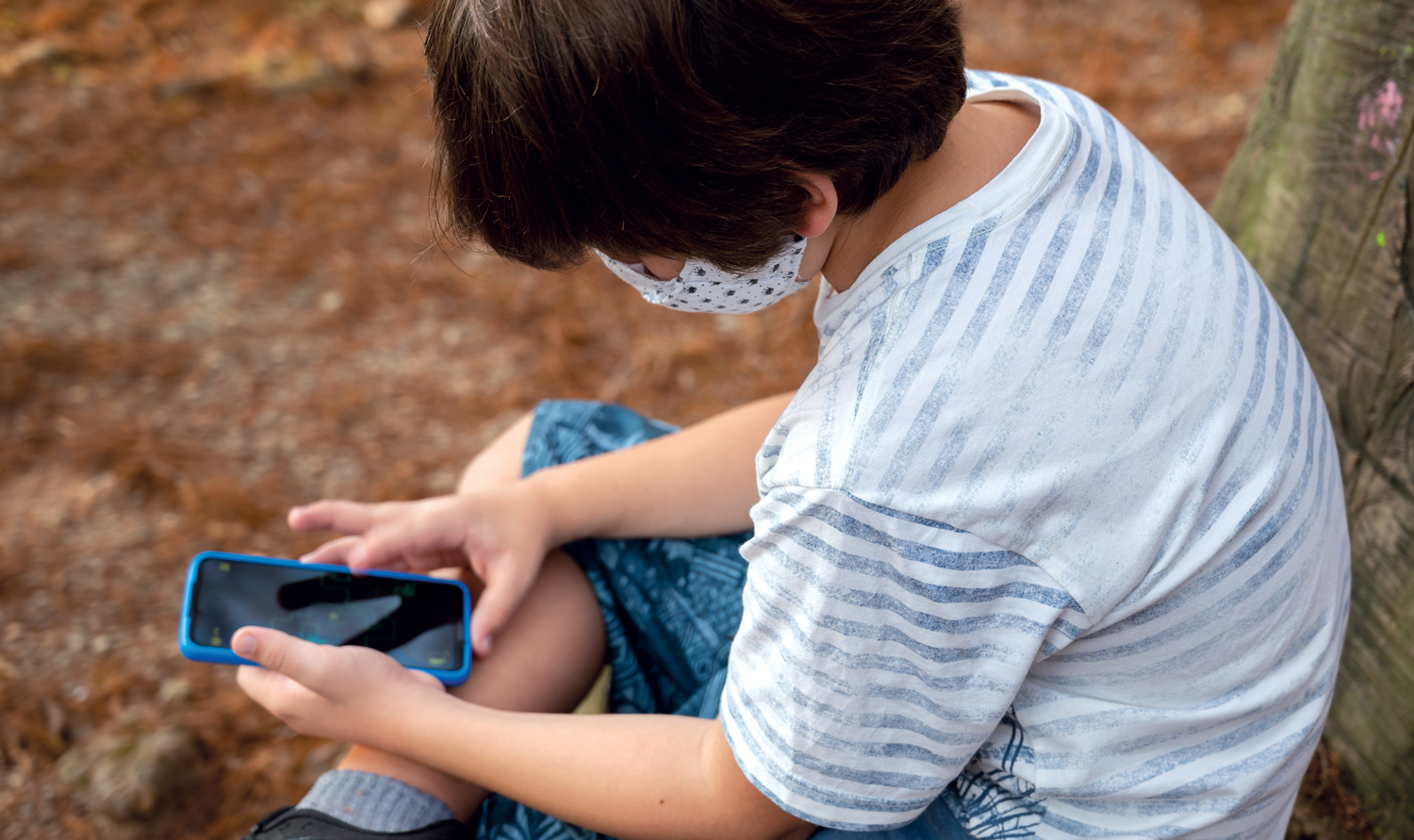 An emergency mental health teleservice for children and youth has been swamped by demand in its first year and as Cathy O’Leary reports, some are primary school aged.
An emergency mental health teleservice for children and youth has been swamped by demand in its first year and as Cathy O’Leary reports, some are primary school aged.
When the headlines warn of surging mental health issues in young people, it is natural to think of troubled older teens struggling betwixt childhood and adult life.
But worryingly it is young children who are among the drivers of the increased demand for mental health services, with two recent cases in Perth of a six-year-old and a seven-year-old needing crisis mental health support.
This trend is reflected in new figures from WA’s Child and Adolescent Mental Health Service.
CAMHS’ Emergency Telehealth Service, which was launched 12 months ago and operates out of Perth Children’s Hospital, fielded more than 1700 calls in its first six months between July and December last year – an average of 12 calls a day.
While some calls to the ETS were made by young people themselves, the majority were from adults such as parents, GPs and other health and school professionals.
Three-quarters of the calls related to children aged 11 to 15, while 17% concerned 16 to 18-year-olds. Overall, 70% of the calls related to girls.
Over the six months, the service carried out 180 mental health assessments of children via phone or video, as an alternative to the child attending PCH’s ED or another hospital ED.
It also provided back-up support for PCH’s ED, doing another 102 mental health assessments at times of high demand or when the telehealth service had advised that a child needed to be taken to the ED.
In total, the ETS carried out 21% of all mental health assessments for PCH.

The service is led by Dr Alex Thompson, a consultant child and adolescent psychiatrist, who heads a team of clinical nurse specialists providing crisis support and mental health assessments between 8am and 2.30am, seven days a week.
Exponential demand
Increasing numbers of children under the age of 18 have attended hospital emergency departments in WA due to self-harm injuries, with 1300 children presenting in 2013, increasing to 1551 in 2018.
“Unfortunately, we haven’t seen any reprieve since the tsunami that was the post-COVID wave, and that’s been a government health-wide experience of ongoing pressure and increasing demands, Dr Thompson told Medical Forum.
“And unfortunately, the resources are still taking time to come in, so it’s a real heart decision rather than head decision to keep going in this climate. Everyone who works in this space relies on each other’s compassion and motivation to keep going.”
Dr Thompson said the service was born out of a grant from the Mental Health Commission to develop a telehealth service because of COVID, “and the demand was just waiting for us”.
“What we see is not the young adult cohort, this is children we’re talking about, and when it comes to mental health, we’re seeing younger and younger presentations, before puberty, so it’s not just the adolescent angst turned up to 11,” he said. “We’re seeing a lot of families in crisis, with children displaying symptoms at a high level.
“We’re seeing an overlap between mental health and children with neurodevelopmental differences such as young children on the autism spectrum or with ADHD who are now presenting with mental health difficulties too.”
School pressures
Dr Thompson said there was a strong correlation between mental health presentations and the school calendar.
“It goes up and down like the stock market and we see a reprieve when young people go on holidays but then escalates as the year goes on, and the busiest time for us is November, before the holidays start.”
Dr Thompson said children could use the telehealth themselves but typically it was their parents, carers, health professionals such as GPs and schools who put in the call seeking advice and crisis support.
The emergency telehealth service was a novel approach, not modelled on anything previously existing, but instead based on what was needed. He believes having the ETS has helped keep a lid on escalating mental health presentations at hospital EDs, including at PCH.
He said the telehealth service also did virtual in-reach when young people presented at the general EDs, and that had seen increased demand too.
“The opportunities to intervene in mental health are numerous but what we can’t escape is that at the end of the day, in a crisis, you do rely on emergency services, whether that be in person at PCH, or other EDs, or via the telehealth service.
“We’re seeing things like parent education videos, and that’s great, but we’re seeing the need for crisis response more often.”
While the ETS is online from 8am until 2.30am, demand is highest after school and in the evening. The hope is to move to a 24-hour model.
Not a quick fix
“We’re a relatively young service and keen to mould our service to the needs of the community,” Dr Thompson said.
“Our ultimate aim is to replicate our face-to-face mental health assessment, but the reality is that a mental health assessment takes much longer than a traditional medical assessment, and then in child and adolescent land, their care system also needs time and space to be heard.
“Telehealth takes just as long, if not longer, due to technical considerations that need to be overcome.
“And we know the crisis doesn’t happen in the emergency department – the visit to the ED is the reaction by the family, and so we offer an alternative by saying if you’re at home and experiencing a mental health crisis, call us instead and we can give you the care in your home.”
The service has produced a poster for GPs to explain clearly how it can help them, whether it be urgent specialist mental health advice, or a mental health assessment which includes risk assessment and a discharge plan.
The aim is to provide better care for young people experiencing a mental health crisis in the metropolitan area, including access to urgent mental health assessments in their homes and communities instead of presenting to an emergency department.
Doctors agree the busy and sensory-overloading nature of EDs is not conducive to a young person’s mental well-being, particularly if they have to wait for an assessment.
Dr Thompson concedes that in an emergency, the first response by GPs is to refer the mentally unwell patient to an ED but, where appropriate, a telehealth mental health assessment can avoid that need for a young patient.
More options
“We understand that GPs want to refer young people to ED when there is a crisis, but we would like to provide information on what they might consider doing next time,” he said.
Sometimes callers only require advice and support, but other times the young person needs a mental health assessment, and that could result in them being referred to a community mental health service, being advised to go to PCH ED, or being admitted to an inpatient mental health unit.
“In cases where it makes more sense to refer to another inpatient service, for example one of the older youth units, CAMHS ETS is able to share assessments and handover to the receiving hospital, which supports greater continuity of care during an acute presentation,” Dr Thompson said.
“At the end of the day it’s about improving the quality of clinical care and the experiences of young people accessing emergency mental health services.”
 Who can use CAMHS’s Emergency Telehealth Service
Who can use CAMHS’s Emergency Telehealth Service
- Young people up to the age of 18 in the metropolitan area requiring urgent mental health support or emergency tele-mental health assessment while in a community setting.
- Young people up to the age of 16 presenting to PCH ED or other metropolitan EDs with mental health concerns.
- Young people, families and professionals
such as GPs have direct access to the CAMHS ETS via the urgent telephone support line:
1800 048 636. - In rural, regional and remote WA, the WA Country Health Service’s Mental Health Emergency Telehealth Service provides doctors and nurses with access to specialist clinicians 24/7, for patients of all ages.

